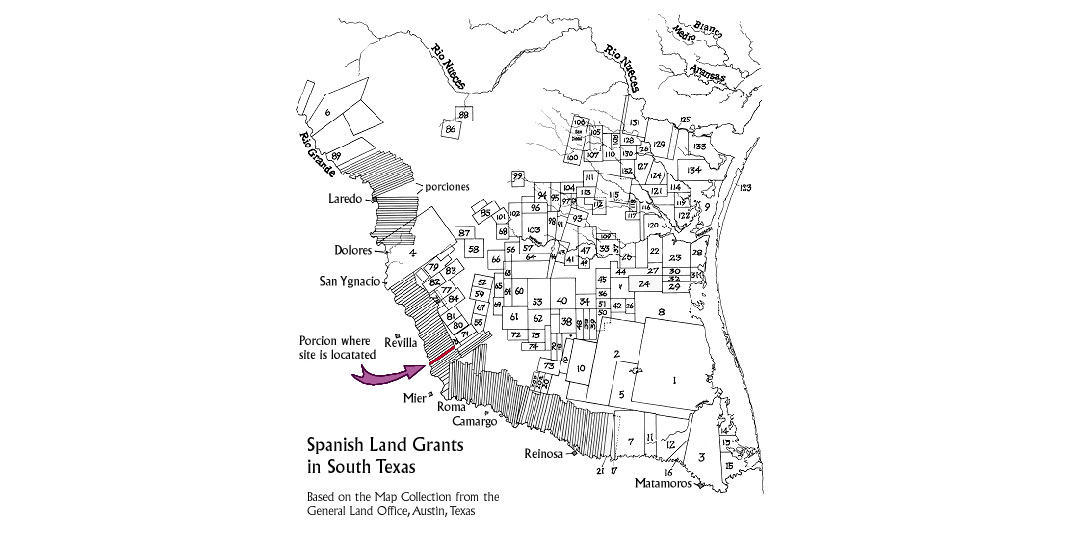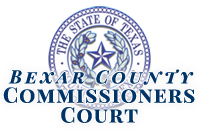As a result of the founding of Texas by the Spanish in 1690, four distinct areas of development occurred in the province. The first district began at “Los Adaes” in 1717 by Domingo Ramon and was later abandoned in 1719. It was re-established under the direction of the Marques de Aguayo in 1721. The presidio was garrisoned, and the mission was reoccupied near the location of present-day Robeline Louisiana. In 1729, “Los Adaes” was declared the capital of Texas. The town of Nacogdoches was begun by the Tejano families as an outgrowth of the presidio and missions first built along the Sabine River.
Soldier settlers received grants for ranching and homesteading in this area. The friendly Caddo Indians made the development of the district very peaceful. Ranching also led to the creation of an economy based on horses and cattle. The Tejano families who began here continued well into the late 1700s. Yet, in 1772, the capital was removed and some of the missions were transferred to San Antonio. The inhabitants were ordered to San Antonio but did not resettle there, instead, they returned to Nacogdoches to continue their futures.
The second important district was the Bexar District which included San Antonio. San Antonio began in 1719 as a presidio and Mission de Valero. Then in 1731 sixteen families from the Canary Islands arrived to settle in the village and had received royal decrees to establish the first city council along with its first mayor, councilman, secretary, and judges. The first civil government in Texas was established by the Canary Islanders and the soldier-settlers of the presidio in 1733.
More importantly, San Antonio became the hub for the other districts to receive soldiers, quartermaster provisions, and civilian trade. Also, the demand from the civilian communities helped fuel the ranching and farming economy in the San Antonio District.
Further, San Antonio was geographically centered in the middle of the province to receive communications and transportation of men and goods from the south at the Presidio de Norte on the Rio Grande. This presidio was located fifteen miles south of present-day Eagle Pass, Texas, and had long been the gateway to Texas.
Then, in 1772, “Los Adaes” was removed as the capital, and San Antonio was made the new capital. This action further cemented the importance of San Antonio as a political, military, religious, and economic center. By the late 1700s, all roads led from San Antonio to all the other military and civilian centers of influence. Tejanos who lived here were destined to prosper and enjoy the fruits of their labors as soldiers, ranchers, and merchants and as leaders of their communities.
The third district in Spanish Texas was the “La Bahia de Espiritu Santo” on the Gulf Coast. It was founded in 1747 by Spanish explorer Marques de Aguayo” to help protect the entry of the French by the sea. Later, they constructed a separate mission complex to serve the Native Americans. The early Franciscan Padres faced challenging circumstances as they dealt with both friendly and hostile natives that they hoped to Christianize.
The surrounding fertile lands were ready for ranching and farming activities by the Tejanos. They had come as soldiers and settlers with their extended families to colonize the frontier. Many of the soldiers came from a ranching heritage that was over two hundred years old. Although being trained soldiers, they possessed extreme horsemanship, cattle handling, and thorough ranching experiences to become successful ranchers.
In 1778, it is reported that over 40,000 cattle were branded with very large ranching operations. “Vaqueros”, the Spanish term for “cowmen” would be the very first to rope and break mustangs, round-up longhorns and trail them to market. The Texas cowboy legend has much to be thankful to the “Vaquero” who rode across Texas long before there were any cowboys here.
The fourth district of Texas was “Nuevo Santander” South Texas defined as the “Sierra Mountains” on the west, the Gulf of Mexico on the east, and the “Bay of Espiritu Santo” at the San Antonio River. In 1746, General Jose Escandon was selected by the Viceroy of New Spain to carry out his plan of exploration, colonization, and development of this undeveloped area. This decision was largely based on the discovery of the French Fort La Salle along the Gulf of Mexico. This defensive action would help deter further incursions by the French or the U.S.
He called for a survey of the region by his captains: Blas Maria Falcon, Carlos Cantu, Vasquez Borrego, Francisco Chapa, and Thomas Sanches. Captain Sanchez was deployed to a place founded as Laredo (1755), Falcon to a place called “Carmargo” (1749), Cantu to the founding of “Reynosa” (1749), Chapa was sent to found “Mier” (1753), Vicente Guerrera was sent to “Revilla” (1749). Then, the general made a call throughout New Spain declaring the availability of land for ranching and settlements. Colonists came from the provinces of Coahuila, Nuevo Leon, San Louis Potosi, and other states of New Spain. Reportedly, over five-thousand pioneers settled in the four districts by 1851.
Typically, the land received by settlers was called an “Entrada” and had frontage on the banks of the “Rio Grande”. Small and large ranches helped create a ranching economy. Some of these ranches were immense enterprises with thousands of mustangs and longhorns. Overall, the four districts succeeded in providing its new Tejanos with land, ranching opportunities, and the promise of a good future. Once again, Tejanos were courageous and self-reliant to prevail in the new frontier and bring about a rewarding future. Viva Tejanos! For more information please visit Texas Tejano.com.
The Early Four Districts of Texas









